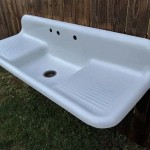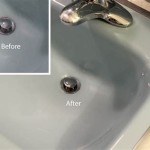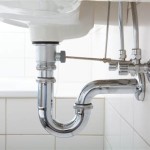Double Sink Vanity Top White: A Comprehensive Guide
The double sink vanity top in white is a ubiquitous fixture in modern bathrooms, offering a blend of functionality, aesthetics, and practicality. Its popularity stems from its ability to accommodate multiple users simultaneously, streamlining morning routines and providing ample counter space. The white color further enhances its appeal, offering a clean, bright, and versatile backdrop that complements various bathroom styles. This article delves into the characteristics, benefits, materials, installation considerations, maintenance, and design aspects of the double sink vanity top in white.
Functionality and Advantages of Double Sink Vanities
The primary advantage of a double sink vanity lies in its ability to cater to two users concurrently. This is particularly beneficial in shared bathrooms, such as those in master suites or family homes. By providing separate sinks and designated counter space, it minimizes congestion and potential conflicts during peak usage times. Individuals can perform their routines without interfering with each other, fostering a more harmonious and efficient bathroom environment.
Beyond simultaneous use, the increased counter space offered by a double sink vanity provides ample room for personal care items, toiletries, and decorative objects. This minimizes clutter and promotes a more organized and visually appealing bathroom. The abundance of surface area allows for the convenient placement of frequently used items within easy reach, contributing to a more user-friendly and functional space.
The double sink design also offers potential benefits in terms of hygiene. By providing separate sinks, individuals can avoid sharing washing space, potentially reducing the spread of germs and bacteria. This can be especially important in households with children or individuals who are particularly susceptible to illness.
Material Selection and Properties for White Vanity Tops
The selection of materials for a double sink vanity top in white is crucial, as it directly impacts the appearance, durability, and maintenance requirements of the fixture. Several popular options are available, each with its own set of advantages and disadvantages. Understanding these material properties is essential for making an informed decision.
Quartz: Quartz is a manufactured stone composed of crushed quartz crystals bound together with resin. It is renowned for its durability, stain resistance, and non-porous nature. White quartz vanity tops offer a consistent color and pattern, making them easy to coordinate with other bathroom elements. They are also relatively low-maintenance, requiring only regular cleaning with mild soap and water. Quartz is considered a premium material and often carries a higher price tag.
Granite: Granite is a natural stone prized for its beauty and durability. White granite options often feature intricate veining and patterns, adding a touch of elegance to the bathroom. However, granite is porous and requires sealing to prevent staining and water damage. It is also more susceptible to chipping and scratching than quartz. Maintenance involves regular sealing and careful cleaning practices.
Marble: Marble is another natural stone known for its luxurious appearance. White marble vanity tops offer a classic and timeless aesthetic. However, marble is highly porous and susceptible to staining, etching, and scratching. It requires meticulous care and regular sealing to maintain its beauty. Marble is a softer stone compared to granite and quartz, making it more vulnerable to damage.
Solid Surface: Solid surface materials, such as Corian, are manufactured from acrylic or polyester resins combined with mineral fillers. They offer a seamless and non-porous surface that is resistant to stains and water damage. White solid surface vanity tops are easy to clean and maintain. They are also available in a wide range of colors and patterns, including options that mimic the look of natural stone. Solid surface materials are typically more affordable than quartz, granite, or marble.
Cultured Marble: Cultured marble is a manufactured material made from crushed marble dust combined with resins. While it offers an affordable alternative to natural marble, it is less durable and more susceptible to scratches and stains. White cultured marble vanity tops are relatively easy to clean, but they may require more frequent maintenance to prevent damage.
Laminate: Laminate is a budget-friendly option consisting of a thin layer of decorative plastic bonded to a particleboard or MDF core. While laminate vanity tops are available in a wide range of colors and patterns, including white, they are less durable and more susceptible to water damage than other materials. They are also prone to scratches and chipping. Laminate is a suitable choice for bathrooms with light usage or for homeowners seeking an affordable option.
Design Considerations and Installation Aspects
The design of a double sink vanity top in white should complement the overall aesthetic of the bathroom. Factors to consider include the style of the vanity cabinet, the shape and size of the sinks, and the type of faucet chosen. The white color provides a neutral backdrop that can be paired with various cabinet finishes, hardware styles, and wall colors.
The shape and size of the sinks should be chosen based on the available space and the intended usage. Rectangular sinks offer a more modern and streamlined look, while oval sinks provide a softer and more traditional feel. The depth of the sinks should also be considered to prevent splashing and ensure comfortable use.
Faucet selection is another important design consideration. The style and finish of the faucets should complement the vanity top and the overall bathroom design. Chrome and brushed nickel are popular choices for faucets, as they offer a clean and modern look. Black or oil-rubbed bronze faucets can add a touch of drama and contrast to a white vanity top.
Installation of a double sink vanity top typically involves several steps, including removing the old vanity top, preparing the cabinet base, applying adhesive, and securing the new vanity top. It is highly recommended to engage a qualified plumber for the plumbing connections, ensuring proper drainage and leak-free operation. The installer must also be familiar with the specific requirements of the chosen material to avoid damage during installation.
Prior to installation, it is crucial to accurately measure the existing vanity space to ensure a proper fit. The new vanity top should be slightly larger than the cabinet base to prevent water from seeping underneath. The installer should also ensure that the cabinet base is level and sturdy to provide adequate support for the vanity top.
When installing a natural stone vanity top, such as granite or marble, it is important to apply a sealant to protect the surface from stains and water damage. The sealant should be reapplied periodically, as recommended by the manufacturer, to maintain its effectiveness. The installer should also use appropriate tools and techniques to avoid chipping or scratching the stone during installation.
After installation, it is essential to inspect the vanity top for any defects or damage. The installer should also ensure that the sinks are properly sealed to the vanity top to prevent leaks. The faucets should be tested for leaks and proper operation. Any issues should be addressed promptly to prevent further damage.
Proper ventilation in the bathroom is crucial to minimize moisture buildup, which can damage the vanity top and promote the growth of mold and mildew. Consider installing an exhaust fan to remove excess moisture during and after showers or baths. Regular cleaning and maintenance will help to keep the vanity top in good condition and extend its lifespan.
The choice of edge profile for the vanity top also impacts its visual appeal and functionality. Common edge profiles include eased edge, bullnose edge, ogee edge, and mitered edge. The eased edge is a simple and understated option, while the bullnose edge offers a softer and more rounded look. The ogee edge provides a more decorative and elegant appearance. The mitered edge creates a seamless and contemporary look.
The positioning of the sinks within the vanity top is also a design consideration. Sinks can be centered within the vanity top, or they can be offset to provide more counter space on one side. The placement of the sinks should be determined based on the available space and the individual preferences of the users. Consider the reach and accessibility of each sink during the planning phase.

Yasinu Olive 72 In W X 22 D Qt Vanity Top White Rectangular Double Sink Bathroom Calacatta Yn2372dcq

61 In W X 22 D Solid Surface Double Sink Vanity Top Silver Ash With White Sinks

Home Decorators Collection 61 In W X 22 D Quartz White Rectangular Double Sink Vanity Top Warm Qt61wt The

Design House 553313 61 Cultured Marble Vanity Top Solid White

Pronto Vanity White 22 X 73 Top Gloss Double

61 In X 22 White Cultured Marble Integral Double Sink Bathroom Vanity Top The Tops Department At Com

James In Brookfield 72 Double Bathroom Vanity Bright White With 3 Cm Arctic Fall Solid Surface Top And Rectangle Sink Nfm

Eviva Aberdeen 78 W X 22 D Double Sink Bathroom Vanity With White Carrara Quartz Top And Rectangular Undermount Sinks

Bridgeport 72 White Oak Bathroom Vanity Double Sink Teodor

64 Inch Antique White Traditional Style Double Sink Top Beckham Chans Furniture







